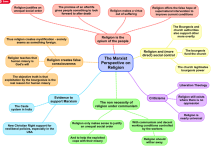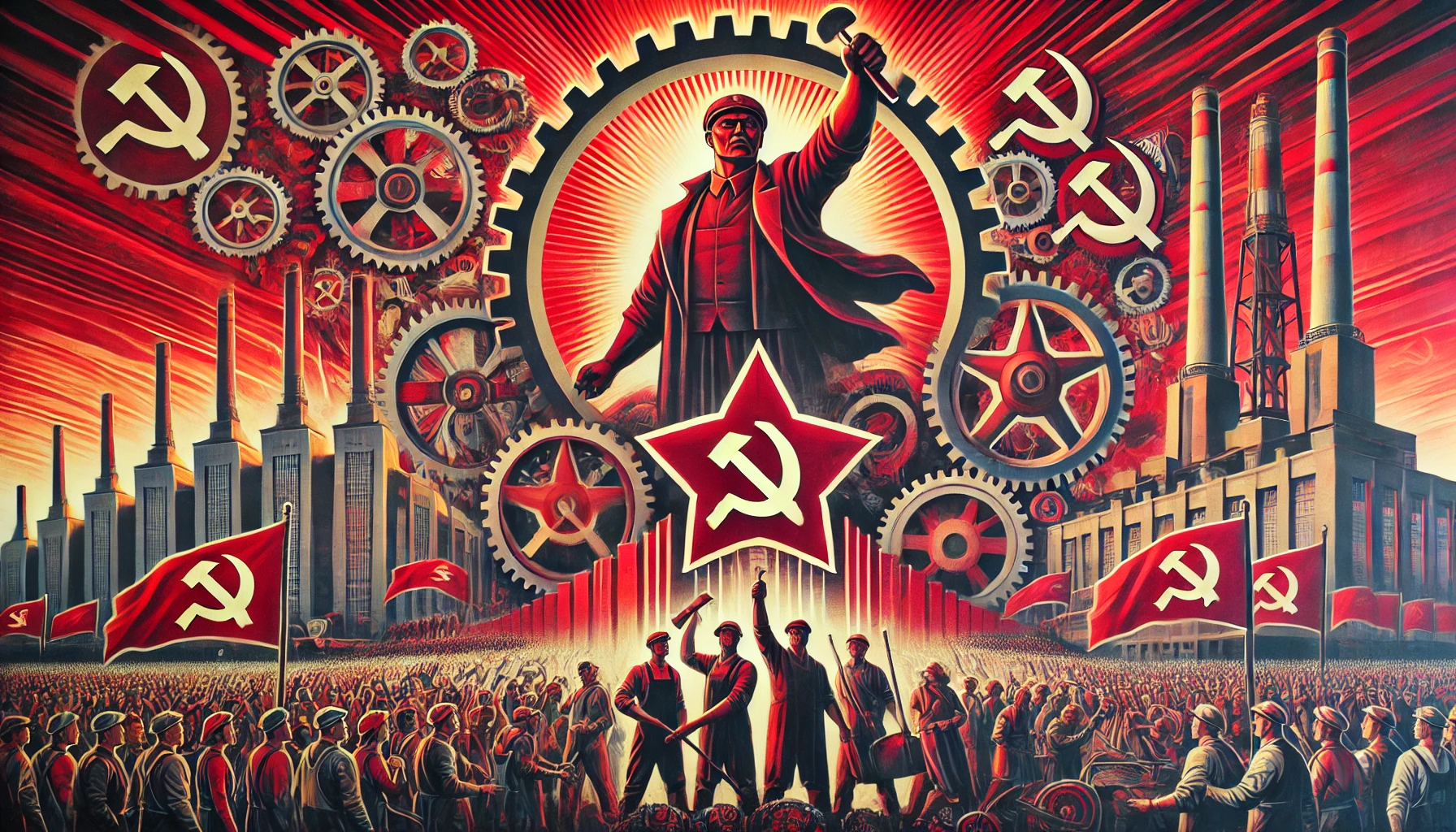45 Communist goals for America
It was Jan. 10, 1963, that Congressman Albert S. Herlong. Jr. from Florida read the list of
45 Communist goals for America into the Congressional Record. The purpose of him reading this was to gain insight into liberal elite ideas and strategies for America that sound awfully familiar today.
The list is attributed to
Cleon Skousen, researcher and author of "
The Naked Communist."
On Wednesday's episode of "Pat Gray Unleashed," Pat and producer Keith revisited Cleon Skousen's book and compared it to the current state of affairs in America and to the Democratic Party's platform.
Do any of these hit close to home?
Here's the list:
1. U.S. should accept coexistence as the only alternative to atomic war.
2. U.S. should be willing to capitulate in preference to engaging in atomic war.
These encapsulate the Kennan Doctrine, which advocated for the "containment" of communism. Establishment figures supporting the amoral containment policy at least implicitly worked with the communists in scaring the wits out of the American people concerning atomic war.
3. Develop the illusion that total disarmament by the U.S. would be a demonstration of "moral strength."
The nuclear freeze advocates supported a freeze on
4. Permit free trade between all nations regardless of Communist affiliation and regardless of whether or not items could be used for war.
5. Extend long-term loans to Russia and Soviet satellites.
6. Provide American aid to all nations regardless of Communist domination.
7. Grant recognition of Red China and admission of Red China to the U.N.
8. Set up East and West Germany as separate states in spite of Khrushchev's promise in 1955 to settle the Germany question by free elections under supervision of the U.N.
9. Prolong the conferences to ban atomic tests because the U.S. has agreed to suspend tests as long as negotiations are in progress.
10. Allow all Soviet satellites individual representation in the U.N.
11. Promote the U.N. as the only hope for mankind. If its charter is rewritten, demand that it be set up as a one-world government with its own independent armed forces.
There are still American intellectuals, and elected members of Congress, who dream of an eventual one world government and who view the U.N., founded by communists such as Alger Hiss, the first secretary-general, as the instrument to bring this about.
World government was also the dream of Adolf Hitler and J.V. Stalin. World government was the dream of Osama bin Laden and the 9/11 hijackers.
12. Resist any attempt to outlaw the Communist Party.
13. Do away with loyalty oaths.
14. Continue giving Russia access to the U.S. Patent Office.
While the idea of banning any political party runs contrary to notions of American freedom and liberty, notions that are the exact opposite of those held by the left-wing communists themselves, nevertheless these goals sought to undermine the constitutional obligation of Congress to investigate subversion. The weakening of our government’s ability to conduct such investigations led to the attack of 9/11.
It is entirely proper and appropriate for our government to expect employees, paid by the American taxpayer, to take an oath of loyalty.
15. Capture one or both of the political parties in the U.S.
In his book "Reagan’s War," Peter Schweizer demonstrates the astonishing degree to which communists and communist sympathizers have penetrated the Democratic Party. In his book, Schweizer writes about the presidential election of 1979.
16. Use technical decisions of the courts to weaken basic American institutions, by claiming their activities violate civil rights.
This strategy goes back to the founding of the American Civil Liberties Union by Fabian Socialists Roger Baldwin and John Dewey and Communists William Z. Foster and Elizabeth Gurley Flynn among others.
17. Get control of the schools. Use them as transmission belts for Socialism and current Communist propaganda. Soften the curriculum. Get control of teachers associations. Put the party line in textbooks.
18. Gain control of all student newspapers.
19. Use student riots to foment public protests against programs or organizations that are under Communist attack.
The success of these goals, from a communist perspective, is obvious. Is there any doubt this is so?
20. Infiltrate the press. Get control of book review assignments, editorial writing, policy-making positions.
21. Gain control of key positions in radio, TV & motion pictures.
22. Continue discrediting American culture by degrading all form of artistic expression. An American Communist cell was told to "eliminate all good sculpture from parks and buildings," substituting shapeless, awkward and meaningless forms.
23. Control art critics and directors of art museums. " Our plan is to promote ugliness, repulsive, meaningless art."
24.Eliminate all laws governing obscenity by calling them "censorship" and a violation of free speech and free press.
25. Break down cultural standards of morality by promoting pornography and obscenity in books, magazines, motion pictures, radio and TV.
26. Present homosexuality, degeneracy and promiscuity as "normal, natural and healthy."
This is the Gramscian agenda of the "long march through the institutions" spelled out explicitly: gradual takeover of the "means of communication" and then using those vehicles to debauch the culture and weaken the will of the individual to resist.
Today those few who still have the courage to advocate public morality are denounced and viciously attacked. Most Americans are entirely unwitting regarding the motives behind this agenda.
27. Infiltrate the churches and replace revealed
religion with "social" religion. Discredit the Bible and emphasize the need for intellectual maturity, which does not need a "religious crutch."
This has been largely accomplished through the communist infiltration of the National Council of Churches, Conservative and Reform Judaism, and the Catholic seminaries.
28. Eliminate prayer or any phase of religious expression in the schools on the grounds that it violates the principle of "separation of church and state"
Replacing belief in the creator with belief in the earthly man-controlled State.
29. Discredit the American Constitution by calling it inadequate, old fashioned, out of step with modern needs, a hindrance to cooperation between nations on a worldwide basis.
And replace our nation of "laws, not men" with royal decree emanating from appointed judges and executive orders. Replace elected officials with bureaucrats.
30. Discredit the American founding fathers. Present them as selfish aristocrats who had no concern for the "common man."
31. Belittle all forms of American culture and discourage the teaching of American history on the ground that it was only a minor part of "the big picture." Give more emphasis to Russian history since the Communists took over.
Obliterating the American past, with its antecedents in principles of freedom, liberty and private ownership is a major goal of the communists then and now.
32. Support any socialist movement to give centralized control over any part of the culture – education, social agencies, welfare programs, mental health clinics, etc.
Public ownership of the means of production, the core principle of totalitarianism.
33. Eliminate all laws or procedures which interfere with the operation of the Communist apparatus.
34. Eliminate the House Committee on Un-American Activities.
35. Discredit and eventually dismantle the FBI.
36. Infiltrate and gain control of more unions.
37. Infiltrate and gain control of big business.
Turn America into a socialist police state.
38. Transfer some of the powers of arrest from the police to social agencies. Treat all behavioral problems as psychiatric disorders which no one but psychiatrists can understand or treat.
The Soviets used to send "social misfits" and those deemed politically incorrect to massive mental institutions called gulags. The Red Chinese call them
39. Dominate the psychiatric profession and use mental health laws as a means of gaining coercive control over those who oppose communist goals.
Psychiatry remains a bulwark of the communist agenda of fostering self-criticism and docility.
40. Discredit the family as an institution. Encourage promiscuity and easy divorce.
Done! The sovereign family is the single most powerful obstacle to authoritarian control.
41. Emphasize the need to raise children away from the negative influence of parents. Attribute prejudices, mental blocks and retarding of children to suppressive influence of parents.
Outcome-based education, values clarification or whatever they’re calling it this year.
42. Create the impression that violence and insurrection are legitimate aspects of the American tradition; that students and special interest groups should rise up and make a "united force" to solve economic, political or social problems.
This describes the dialectical fostering of group consciousness and conflict, which furthers the interests of authoritarianism.
43. Overthrow all colonial governments before native populations are ready for self-government.
The results of this successful campaign are increasingly obvious in the world today.
44. Internationalize the Panama Canal.
45. Repeal the Connally Reservation so the U.S. cannot prevent the World Court from seizing jurisdiction over domestic problems. Give the World Court jurisdiction over domestic problems. Give the World Court jurisdiction over nations and individuals alike.


